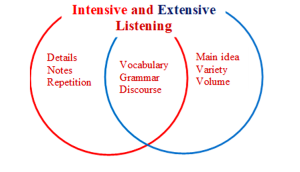From my experience, and the experiences of my colleagues and students, online learning and teaching have gained significant popularity on a global scale in recent years.  Hui & Yunus (2023) suggest that teachers could benefit from a revision in curriculum to support modernized online teaching approaches that help foster a motivating, authentic, and satisfying online learning environment with the goal of promoting a sense of student autonomy. Implementing proper strategies could result in better learning. Continue reading
Hui & Yunus (2023) suggest that teachers could benefit from a revision in curriculum to support modernized online teaching approaches that help foster a motivating, authentic, and satisfying online learning environment with the goal of promoting a sense of student autonomy. Implementing proper strategies could result in better learning. Continue reading
Category Archives: Activities
The 2024 TESL Ontario Annual Conference Call for Proposals is Now Open!
This year’s TESL Ontario Annual Conference will be taking place November 13-15, 2024. The call for presentation proposals is now open for this year’s event: Navigating New Routes in Language Education. The TESL Ontario Annual Conference provides an exceptional opportunity to share your expertise and research to a diverse and engaged audience, fostering professional growth and visibility in your field. It allows you to contribute to the collective knowledge of our community, receive valuable feedback, and engage in stimulating discussions that can inspire new ideas and collaborations.
Participating in the TESL Ontario Annual Conference as a presenter enhances your communication and presentation skills, builds your network with peers and industry leaders, and positions you as a thought leader. The experience not only boosts your confidence but also opens doors to future opportunities, both academically and professionally.
Interested presenters can choose from a variety of session types to deliver live or pre-recorded, including Papers, Presentations, Publisher’s Presentations and Technology Presentations.
The benefits of presenting at the TESL Ontario Annual Conference are numerous:
1 – Presenters receive a one-day complimentary registration for the day of their presentation
2 – Presenters receive a certificate for five (5) hours of Professional Development for their one-hour session
3 – The opportunity to hone virtual presentation skills
4 – The opportunity to expand one’s personal learning network within our field
5 – The opportunity to share knowledge and engage in inspiring conversation
New presenters will have access to a comprehensive and self-directed training package with the support of a dedicate conference team of organizers, session moderators and web admin. Returning presenters will not be require to complete training unless they wish to do so. A brief “What’s New in 2024” reference video will also be available for repeat presenters.
Interested presenters can visit https://teslontario.formstack.com/forms/callforpresentations2024 for more information about the conference, this year’s theme, presentation requirements and to submit their proposals. All proposals should be received by June 10, 2024.
We can’t wait to see you in November!
Incorporating Listening Activities Into Literacy Classes

Literacy teachers emphasize reading and writing because those are the only two skills assessed at the literacy level. However, when does the attention given to those two skills become excessive? And, by devoting the bulk of class time to those two skills, do we do so at the expense of a holistic approach to teaching?
Continue readingRaising students’ awareness of the effectiveness of note-taking for vocabulary learning through testing rather than teaching
Learning new words is a challenging aspect of language learning and the fact that there are numerous methods for vocabulary learning is itself a testimony to its difficulty.
Of all the methods and techniques that exist, I have always found it useful to keep records or take note of new vocabulary words with their English definition and then use them in one single paragraph. Some popular vocabulary books, such as 504 Essential Words and 1100 Words You Need to Know, have endorsed this method of learning vocabulary.
Student Success in the Online Classroom
 I work remotely as an ESL teacher for a Chinese company teaching English as a Second Language to students aged six to thirteen in China. From my observations, the cultural expectations in China are highly focused on academics.
I work remotely as an ESL teacher for a Chinese company teaching English as a Second Language to students aged six to thirteen in China. From my observations, the cultural expectations in China are highly focused on academics.
I’ve witnessed students attend class through a mobile device while eating dinner, in bed sick, or completing other homework while waiting for class to begin. It’s not unusual for students in China to have 12-hour school days, then come home to learn English.
April is Poetry Month
 Remember poetry? Do you ever find opportunities to use it in your English instruction? This April marks the 25th anniversary of national poetry month. We hope you enjoy this selection of previous blogs about poetry from TESL Ontario Blog.
Remember poetry? Do you ever find opportunities to use it in your English instruction? This April marks the 25th anniversary of national poetry month. We hope you enjoy this selection of previous blogs about poetry from TESL Ontario Blog.
“If you wanted a poem, you only had to look out of a window. There was material always, walking or running, fighting or screaming or singing.” Gwendolyn Brooks, African-American poet and Pulitzer Prize-winning author of Annie Allen.
Getting to Know Each Other Better in the Language Classroom
In my very first TESL Ontario blog post, I shared an activity to help teachers remember their students’ names.1 It also happens that the activity helps students learn each other’s names and, as a result, helps to build community. By addressing each other by name, students are more likely to build bonds and feel valued. Building community is a process, however, and although this activity is a good start, teachers can incorporate other activities throughout the term or academic year to make the process memorable.
The following activity is one I use to help strengthen students’ sense of community by letting them share something about themselves that highlights a positive attribute. This activity also gives the teacher the opportunity to do the same.
Activity: Write a Character Sketch
I love creative writing. Creative writing can excite so many learners, but it can also terrify more than a few learners. I experimented with a number of activities that would help build experience and confidence with creative writing and this one—writing a character sketch—works as the most manageable and successful.
Continue readingListening in Language Learning Part I: Intensive Listening
 This two-part blog post focuses on tips for improving your students’ listening skills with both intensive and extensive listening methods. In Part 1, I answer the question “What is intensive listening?”, offer tips for intensive listening practice, and suggest overall listening goals for teachers to bear in mind. After reading Part I, head over to read Listening in Language Learning Part II: Extensive Listening (coming on Monday, July 24th).
This two-part blog post focuses on tips for improving your students’ listening skills with both intensive and extensive listening methods. In Part 1, I answer the question “What is intensive listening?”, offer tips for intensive listening practice, and suggest overall listening goals for teachers to bear in mind. After reading Part I, head over to read Listening in Language Learning Part II: Extensive Listening (coming on Monday, July 24th).
Intensive and Extensive Listening
Much research shows that intensive and extensive listening alike are essential contributors to language learning in the areas of vocabulary development, grammatical skills, and discourse awareness. ESL learners need to practice both skills to reap maximum benefits. Though each form of listening tends to focus on different skills, they are complementary, and both are crucial. However, like extensive reading, extensive listening occurs outside of the classroom. Unlike with intensive listening, teachers need to pay special attention to motivate their students to engage in such extensive skills on their own.
Continue reading
Activity: Everyday Dialogues
 Are you looking for an engaging way to focus on natural-sounding idiomatic language, pronunciation, intonation, and rhythm? Wanting to focus on these particular elements, I did what I always do when I wanted to fill a gap: I searched the internet. While I found a number of resources for dialogues, I was mostly disappointed with what I had found. I found short dialogues that were disconnected and unnatural where the intention was clearly language-focused – but with the result of feeling meaningless and maybe even pandering. I tried a few of those dialogues and quickly thought: I wouldn’t enjoy this if I were learning a language.
Are you looking for an engaging way to focus on natural-sounding idiomatic language, pronunciation, intonation, and rhythm? Wanting to focus on these particular elements, I did what I always do when I wanted to fill a gap: I searched the internet. While I found a number of resources for dialogues, I was mostly disappointed with what I had found. I found short dialogues that were disconnected and unnatural where the intention was clearly language-focused – but with the result of feeling meaningless and maybe even pandering. I tried a few of those dialogues and quickly thought: I wouldn’t enjoy this if I were learning a language.




